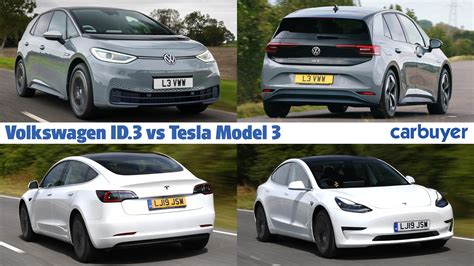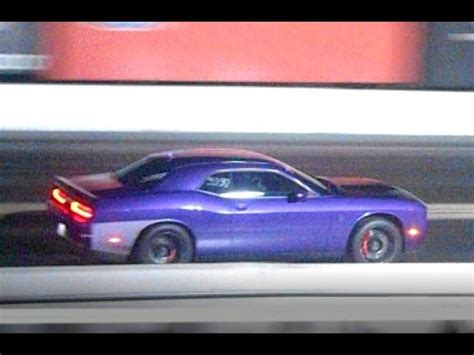
Introduction: A Comparative Analysis of the Volkswagen ID.4 and Tesla Model 3
The automotive industry is undergoing a paradigm shift, with electric vehicles (EVs) gaining prominence and gradually replacing their fossil-fueled counterparts. Among the frontrunners in this transition are the Volkswagen ID.4 and Tesla Model 3, two EVs that have garnered significant attention and acclaim.
This article delves into an in-depth comparison of the Volkswagen ID.4 and Tesla Model 3, examining their specifications, performance, range, charging capabilities, technology, safety features, and overall driving experience. By juxtaposing these two formidable contenders, we aim to provide readers with a comprehensive understanding of their respective strengths and weaknesses, aiding them in making informed decisions when considering their next electric vehicle purchase.
Design and Aesthetics: A Matter of Personal Preference
The Volkswagen ID.4 and Tesla Model 3 exhibit distinct design philosophies, catering to diverse aesthetic preferences. The ID.4 embodies a more traditional SUV silhouette, with a spacious cabin, elevated ground clearance, and a boxier profile. Its sleek lines and sharp angles lend it a contemporary and dynamic appearance.
In contrast, the Tesla Model 3 exudes a sleek and futuristic aura, akin to a four-door coupe. Its low-slung profile, sloping roofline, and minimalist design elements create a striking and aerodynamic presence. Ultimately, the choice between these two vehicles' designs is a matter of personal preference, as both offer unique visual appeal.
Performance and Acceleration: A Close Contest
When it comes to performance, the Volkswagen ID.4 and Tesla Model 3 deliver exhilarating driving experiences, albeit with varying characteristics. The ID.4 offers a commendable acceleration of 0-60 mph in 5.4 seconds, thanks to its dual-motor all-wheel-drive system that generates 295 horsepower and 339 lb-ft of torque.
The Tesla Model 3, on the other hand, boasts a blistering 0-60 mph time of just 3.1 seconds in its Performance variant, attributed to its potent dual-motor setup that produces 450 horsepower and 471 lb-ft of torque. However, it's worth noting that the Model 3's peppy acceleration comes at a premium compared to the ID.4.
Range and Charging: Navigating the Electric Frontier
Range and charging infrastructure are crucial considerations for EV owners. The Volkswagen ID.4 offers a respectable range of up to 260 miles on a single charge, while the Tesla Model 3 boasts a slightly longer range of up to 353 miles. Both vehicles support fast charging capabilities, allowing for swift replenishment of battery power.
The Tesla Model 3 enjoys an advantage in terms of charging infrastructure, with its extensive Supercharger network providing widespread and reliable charging stations. Conversely, the ID.4 relies on a mix of public charging stations and home charging options, which may vary in availability and convenience depending on the region.
Technology and Connectivity: Embracing the Digital Age
The Volkswagen ID.4 and Tesla Model 3 are brimming with advanced technology features, enhancing connectivity, convenience, and overall driving experience. The ID.4 features a 10-inch touchscreen display, a digital instrument cluster, and a comprehensive suite of driver assistance systems.
The Tesla Model 3 takes technological prowess to another level with its massive 15-inch touchscreen display, which serves as the primary interface for controlling various vehicle functions. It also boasts a sophisticated Autopilot system that offers semi-autonomous driving capabilities, adaptive cruise control, and lane-keeping assist.
Safety and Reliability: Prioritizing Passenger Protection
Both the Volkswagen ID.4 and Tesla Model 3 have earned accolades for their impressive safety ratings, earning top marks in various crash tests conducted by independent agencies. They are equipped with an array of advanced safety features, including airbags, ABS brakes, traction control, and electronic stability control.
In terms of reliability, the Tesla Model 3 has a slight edge over the Volkswagen ID.4 based on various consumer surveys and reports. However, both vehicles are relatively new to the market, so long-term reliability data is still being gathered.
Driving Experience: A Balancing Act of Comfort and Engagement
The Volkswagen ID.4 delivers a comfortable and composed driving experience, with a well-tuned suspension that absorbs bumps and road imperfections effectively. Its spacious cabin and supportive seats further enhance passenger comfort during long journeys.
The Tesla Model 3, on the other hand, offers a more engaging and dynamic driving experience, with responsive handling, precise steering, and instant acceleration. Its minimalist interior design and panoramic glass roof add to the overall driving pleasure.
Conclusion: Choosing the Right EV for Your Needs
The Volkswagen ID.4 and Tesla Model 3 represent compelling options in the burgeoning electric vehicle market. The ID.4 strikes a balance between affordability, practicality, and impressive performance, making it an excellent choice for those seeking a well-rounded EV.
The Tesla Model 3, while pricier, offers exceptional range, cutting-edge technology, and exhilarating driving dynamics. It appeals to those who prioritize performance, innovation, and a comprehensive charging infrastructure. Ultimately, the choice between these two EVs depends on individual preferences, driving needs, and budget considerations.

